20 E-commerce Branding Strategies That Ensure Success
Building your e-commerce brand can take time and effort in the modern market. Thousands of new brands are emerging pretty much every day for every industry you can think of, which means making yourself stand out is an even bigger challenge.
But don’t despair! Let’s discuss e-commerce strategies you can use to make a dent in your niche. No matter how high the competition is, we’ll help you stand out.
What Is eCommerce branding?
Let’s start at the beginning. E-commerce branding is a process where you create a unique identity for your business in the minds of your target consumer.
ECommerce branding involves everything that transmits information about the company, from logos to the mission of the company and the tone of voice in which the company conveys its message. The visual elements are just one part that establishes the eCommerce branding. An organization must ensure its actions align with the image they have already established every time.
Importance of branding in eCommerce
Building your brand is mandatory to establish your unique identity in a world where global eCommerce is constantly competing. There are a ton of benefits that can convince you to work on your eCommerce brand. Take a quick peek at the list of benefits of implementing branding strategies to comprehend the importance of it.
- Increased revenue & profit margin
- Connect with potential customers
- Lowers customer acquisition cost (CAC)
- Flexibility of Operations
- Better Convenience for Customers
- Increased Customer Outreach Range
- The ability to provide a Detailed Overview
- Better Scalability
- Targeted marketing opportunities
What are the best eCommerce online branding strategies?
1. Identify your target audience
Before you start building your brand, you need to choose the right audience. If not, who’ll be interested in your products and brand? Who exactly is the ideal customer base that your brand will deal with?
These questions may confuse you initially, but once you start figuring out the answers, you’ll find your target audience, and it’s all smooth sailing from there.
Determining your target customers has a lot of benefits, including:
- Generating relevant content targeted toward individuals within the audience
- Creating campaigns that lead to conversations
- Personalizing the User Experience (UX)
- Improving target approach
- Investing in the right direction for better ROI
MailChimp is a great example, which made it clear to everyone who their target audience is.

2. Decide on the brand’s name
What’s a brand without a name? Your brand’s name is something your consumers will identify you with. Even when you have a great logo designed by one of the industry’s finest, your name is something people will always refer to first.
A brand name doesn’t just identify the brand itself; it also expresses what it offers. It can go as far as influencing an individual’s decision to buy your product. So when choosing your brand name, ensure it’s something unique and catchy.
You can create branded names if you combine two or more words. For example Pinterest, their name came from combining “Picture and Interest.”
Once you’ve decided on the name, check whether the domain and social handles are available or not.
3. Design a memorable logo
When you’re thinking about Starbucks, what’s the first thing that comes to your mind? The shade of green that’s on their logo. There’s your answer as to how powerful a well-designed logo can be.

When you’re thinking about Google, You always think of the colors of each letter when you see the assembly of the letters together.

A well-designed logo is a piece of visual information that will pop up in people’s heads as soon as your brand is mentioned. So when deciding on the logo design, make it something that conveys the tone of your brand right away.
Also, if you want to keep it simple and use your brand name as a logo, remember to use an easily readable font and the right size, so the name is as clear to view and read.
4. Create branded packaging
Let’s say you received a package on your doorstep that is a plain white box with no markings or name on it. The most reasonable first reaction you would have can be confusion, not being sure what is in the box, who it is from, etc. The first question that might pop into your mind is “did I get scammed by a Chinese dropshipper?”
When sending your products out to your customers, you don’t want them to feel scammed or confused. You want them to get excited about receiving what they ordered. Branded packaging serves that purpose.
Designing your branded packaging in a color tone similar to your branding image helps you maintain consistency while giving your products a unique identity.

Görtz shoes designed by the German creative agency Thjnk.
5. Establish brand values
Your brand value determines the following main things:
- Identity
- Message
- Personality
- Your Story
- Action
- The behavior of the organization
- Decision-Making Process
6. Build your brand’s authenticity
Brand authenticity determines how genuine a brand is regarding its services, products, values and how it presents itself. Different aspects factor into brand authenticity, and it’s up to you to look out for all of them.
90% of consumers agree that brand authenticity is what they consider when choosing a brand to buy from and support. But how do you build your brand’s authenticity?
Our motto is: “Transparency is everything.” With all the different social media platforms, it’s tough to hide anything from your consumers and transparency will be your biggest weapon to win the battle for authenticity.
Be transparent with every single thing. Your policies, how you operate, your plans, how your brand deals with different scenarios, and what you have planned. Remember to reveal every single piece of information that affects your customers.
When you’re open with your consumers, they start trusting you because they feel validated when they receive information about different aspects of your brand.
Here are a few tried and tested methods of building brand authenticity:
- Create Personal and Relevant Content: You can schedule posts on your blog and social media platforms to inform your customers about different products or upcoming events regarding your brand.
- Participate In Industry-Related Forums: There are tons of relevant groups for every industry on different social media platforms. Join the community, and share your brand and ideas with everyone to attract curious eyes on you.
- Get Acquainted With The Big Shots of the Industry: Many professionals and influencers have been in your target industry for a long time. Approach them, bond with them. You’ll get valuable advice for branding strategies and chances to promote your brand in front of a bigger and better audience.
7. Decide on your brand’s tone and voice
When Native, a deodorant brand, started their journey, its message was: “Deodorant that isn’t a chemistry experiment.” The message is simple, but it makes you reconsider the deodorant choices you have made up until this point.

When you have a confident yet welcoming tone that shows genuine concern for your consumers, you establish your presence in the market.
The voice should also be clear and confident, expressing the goal your brand is trying to achieve.
8. Craft a mission and vision
The mission statement of your brand describes what it’s all about. If you ask yourself three questions “why, how, and what,” the answers are the purpose, the mission, and the vision of your brand.
Your mission statement expresses the immediate impact you want to have with the products your brand is offering. For example, you may want to deliver home security services like SimpliSafe:
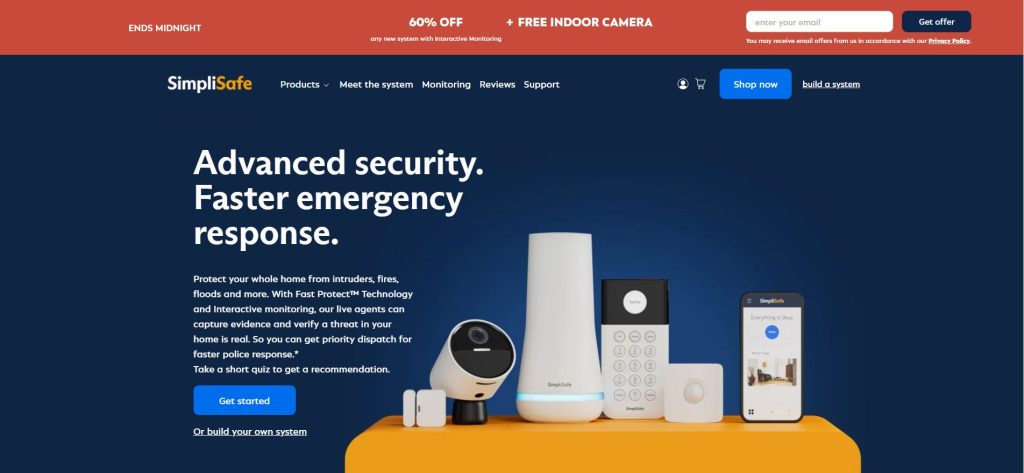
Or you can deliver magnificent magnet posters like DisPlate.
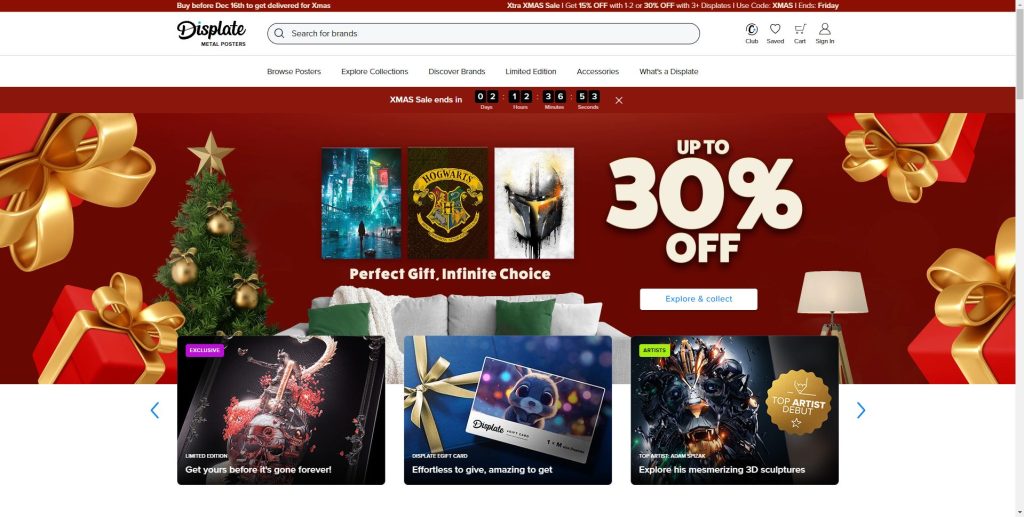
In either case, the mission and vision of your brand should always be upfront. But to do that, you must decide what you’re trying to deliver to your target audience.
Your vision statement is the big picture you have in mind for your brand in the near future, the compass that’ll help you navigate the stormy seas of brand improvement and maximum contention of your customers.
When you have a clear vision statement, people will often remember your brand just for the clarity of your mission vision.
9. Build a catchy tagline
Everyone remembers Arnold’s “Hasta La Vista” from Terminator 2 or Carrie-Ann Moss’s “Dodge this” from The Matrix.
A tagline is a one-liner that will hopefully have a positive and lasting impact on your consumers and potential customers. It’s something catchy that people will remember you by.
A tagline should always express the core objective of your brand within a single sentence, ideally be to the point and depict your brand so that it’s more appealing to the audience.
To give you a better idea, here are some of the catchiest taglines from different major favorite brands:
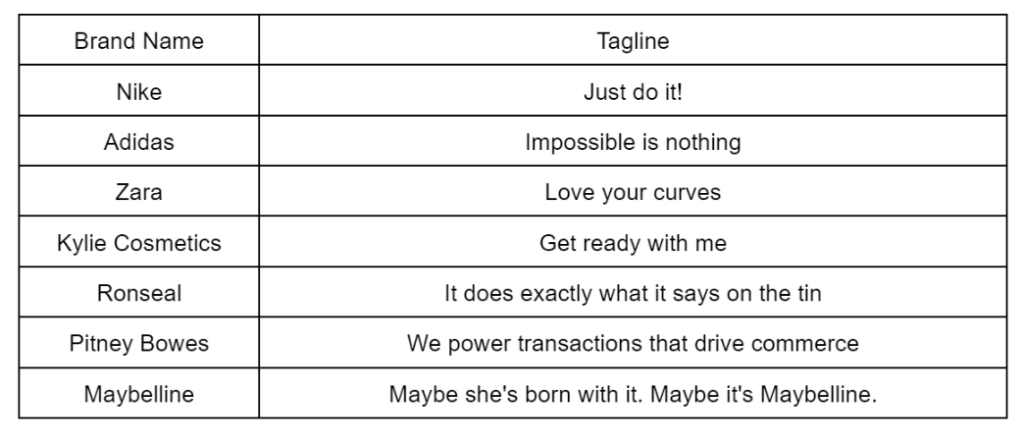
10. Create and maintain brand guidelines
Creating a detailed branding guideline is your best bet to maintain consistency within your brand.
A branding guideline includes the specific path you will take to maintain consistency with your brand’s mission, vision, tone, and voice. Your brand guidelines determine what your brand is about, its actions and its principles.
It’s more of an old-fashioned rulebook that’ll help you maintain your brand identity. And, of course, your brand identity is more than just your logo and a fancy tagline.
Here’s what your brand guideline should include:
- Details about the mission, vision, and values of your brand
- Guidelines on the usage of your logo with proper permissions
- Color palettes
- Font size
- Default tone of voice
- Grammar rules for posts (social media and blog)
- Different design elements (images/ photographs, icons, etc.)
- Business cards
- Letterhead designs
There are no specific rules for creating a brand guideline, but the list above contains the most common concerns your brand guideline should include.
A great example of following a brand guideline and maintaining consistency is Netflix.

Even if I don’t mention the name, the moment you see this icon, the intro noise pops up in your mind, and you immediately know what it’s all about. It all came to fruition just because of their brand consistency.
11. Tell your brand’s story
The main goal of a brand’s story is to incite an emotional reaction from your target audience. Traditional marketing only shows your brand to others, but digital marketing has opened a new set of possibilities. With a story behind your brand, your consumer base has more chances to engage with your brand on a more personal level.
A brand’s story isn’t about glorifying the brand. It comes with a mix of success and failure that helps the brand relate to the general masses.
Let’s take HobSpot’s story, for example. They state their humble beginnings and how they came this far.
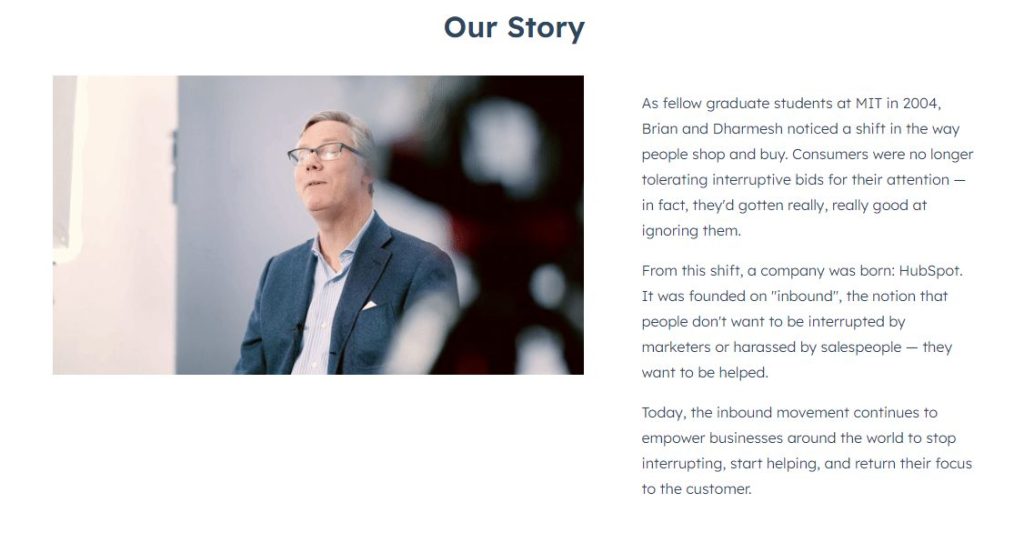
In your story, share your mission and the vision that encouraged you to create your brand and lead from there.
12. Outline your brand UVP & USP
A UVP (Unique Value Proposition) helps you set your brand apart from your competitors. When you’re offering something that other brands within the market are not, you create a USP (Unique Selling Point) for your brand.
In today’s world, it’s very tough to come up with 100% unique ideas, but you should still do your best to figure out your UVP anyway.
Look at Beltology for a great UVP. Their website has described the top 3 reasons they provide the best belts. Then they have CTA placed accordingly for you to shop from their site, driving their conversion rates up as high as possible.
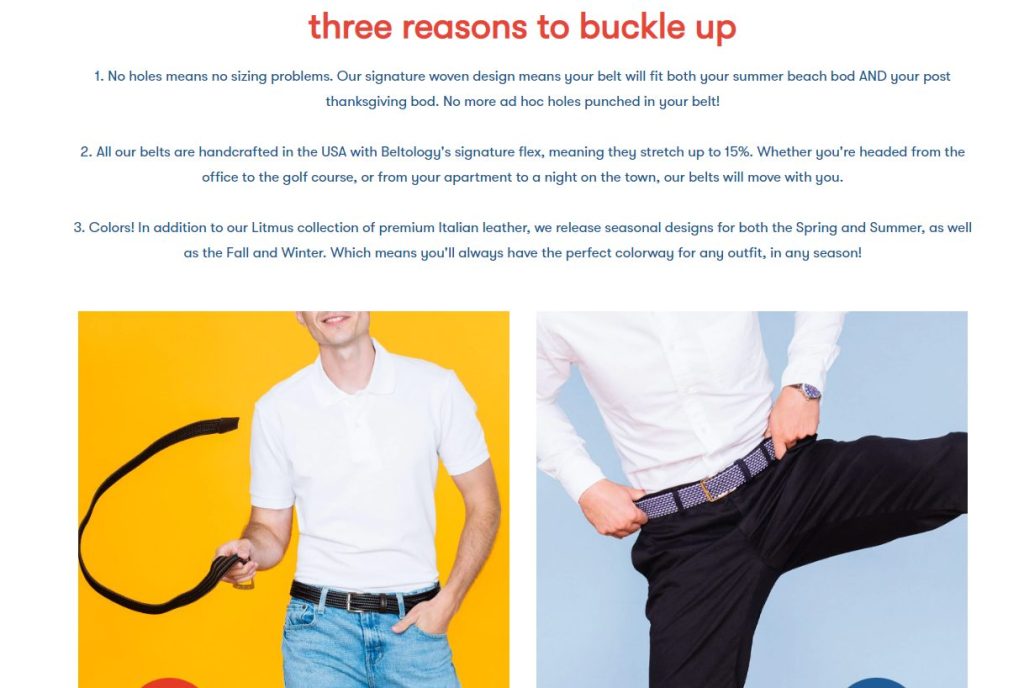
You can develop your USP by analyzing your competitors and asking yourself why they should buy from you instead of them. For example, a unique feature that your competitors don’t offer could act as your USP.
13. Be crystal with your shipping & return policies
If a customer is still determining what they’ll receive or how they’ll return it if they don’t like it, your online business will likely flop or fail, affecting the product image.
To ensure that doesn’t happen, keep your shipping and return policies as transparent and descriptive as possible. With a neat policy, the customers are put to ease, and they rely on your brand more, becoming loyal customers.
Good shipping and returning policy can also be a marketing tool since it increases your organization’s credibility.
If you look at BestBuy, you can see how detailed and organized their shipping policy is, and the best part is each section of the policies is easy to navigate.
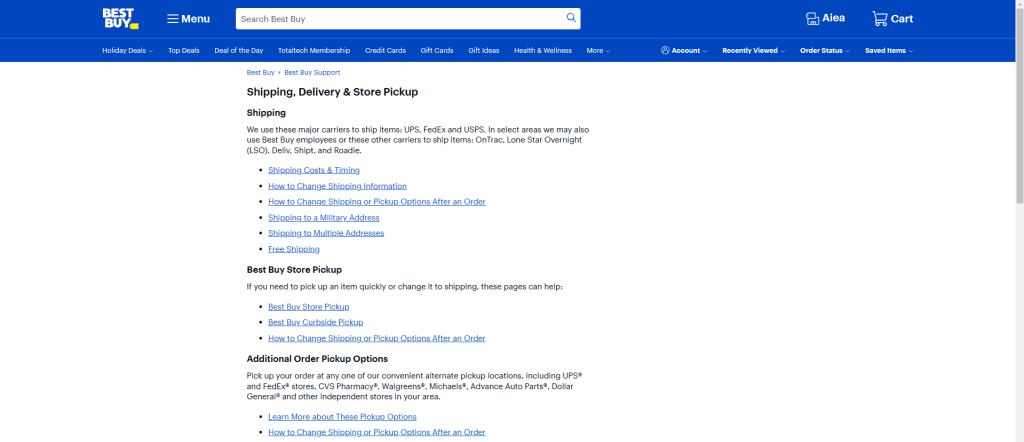
Their policy page makes the customer journey smoother, enforcing their credibility throughout all their online stores.
14. Always prioritize customer service
How well you serve your customers to give them the best experience can determine the success rate of your brand’s business, there is no question about it.
If there’s something you can do to increase customer satisfaction, you should get to it right away. Often, many eCommerce stores need to catch up on details that would lure in customers and land more sales. Don’t be that person.
Your relationship with your customers doesn’t just end after you’ve made a sale. Once you’ve provided them with the product, you have to continuously provide support for the product you’ve sold to ensure that they’re satisfied and that ease of use is guaranteed.
That way, you increase customer loyalty and the range of your customer base. Fun Fact: According to a survey by Khoros, 83% of customers, report feeling more loyal to brands that promptly respond to and resolve their complaints.
15. Bad products hurt your brand image
Shigeru Miyamoto of Nintendo once said, “A delayed game is eventually good, but a rushed game is forever bad.”

When creating products for your brand, always emphasize quality rather than quantity, even if you have to delay it a little. It can also work as a viable marketing tactic.
When you show consumers that you are delaying a product intentionally to work on its quality, the consumers get more interested in the product, and sales for that product go up. It’s a genuine technique that’s transparent to the consumers and effective.
Another great way to increase the overall customer experience is to look at positive and negative customer reviews. When considering user feedback, you’ll always know how to create a more personalized experience for your target audience.
16. Build your list for email marketing
Anyone who tells you email marketing is dead is lying or doesn’t know the first thing about an eCommerce marketing strategy.
Email campaign marketing is still very much alive and is one of the best eCommerce marketing tactics for reaching a large audience. Email marketing covers multiple stages of the marketing funnel and provides the following benefits:
- Less expensive compared to other marketing strategies
- Best for lead and idea generation
- Great ROI
- Easy to track performance
- Connects with the audience better
- Provides access to a broader audience
- Doesn’t need complicated skills to perform
- Easy to prompt individuals with different CTAs
- Personalized emails for every client
Any business can use email marketing to reach its target audience, and you should do the same. You can add additional flair to convert through emails too. But how?
Add non-invasive pop-ups or CTAs in the mail to encourage people to engage further. Or, add personalized coupons for shopping at your store and analyze the click-through rate to measure your success.
17. Build a content strategy for quality content marketing
Any content regarding your brand works as its voice. Through your content, your brand expresses itself and all it is about. When you have strong content ready to be published, you already have a great way to attract, convert and retain your potential customers. With content marketing, you’re likely to generate more leads and increase your conversion rate.
If you’re wondering why brands are so keen on content marketing efforts, let me present a few benefits of including content marketing in your branding strategy:
- Helpful information makes customers feel like you care about them
- Personalized content connects more with customers, making them feel appreciated
- Informative content encourages a higher rate of engagement
- Constant publication of good content regarding your industry increases your brand awareness
- With content, you get more leads that can turn into customers
- With higher conversion, your sales reach a positive margin
- Conversion through content marketing is much smoother
- With polished content, it’s easier to portray yourself as an authentic brand with social proof
Now, content doesn’t only mean blog articles. It can be a detailed infographic, a set of images that convey a certain message, or a video that describes a product or its benefits.
No matter the type of content, ensure you’re always maintaining brand consistency and tailoring it for the right audience. When you maintain consistency, you get better engagement, which Google and YouTube notice.
18. Maintain social media presence
Everyone’s glued to their social media on their mobile devices these days, which is a definite benefit for online marketers and business owners everywhere: you now have a great way to reach your audience.
When you’re active on different social media platforms from your brand’s account or page, you can talk and share with your consumer base. Doing so increases the credibility of both you and the brand you own.
Plus, social media traffic can be directed towards your brand and business with the right approach. Have we mentioned it’s a free tool for creating brand awareness? Why not utilize it to its full potential? Create a solid social media strategy for your brand and get on that bandwagon right now!
19. Maintain your brand aesthetics
Your brand aesthetic reflects the tone and vision of your brand in a visual manner. To keep your branding consistent, maintaining your brand aesthetic will be crucial.
Your brand aesthetics can be expressed through social interactions and social media profiles. Keeping a consistent tone makes it easier for your customers to associate you with a certain idea or imagery.
With the right aesthetics, you can ensure people remember your brand longer. As an example, let’s bring back the Starbucks logo:
Their consistent tone throughout online outlets ensures people always remember them when thinking about coffee, and the mere sight of their logo or even their shade of green is the easiest way to recognize their brand.
20. Maintain brand consistency
When you have already decided on your aesthetics, story, and mission vision, it’s up to you to maintain consistency throughout your everyday operations. People stick to you for consistency when all your channels send out the same signals.
When you’re representing your brand, use only one style or voice. Many eCommerce brands stray from their core values by using different voices, colors, or tags. According to Lucidpress, consistent branding can increase revenue by 33%
You must maintain consistent brand harmony through different media to retain the attention of your consumer base for a long time. Your active users always look for consistency; failing to do so only gets you negative online reviews.
To ensure the brand’s consistency, make sure you are maintaining the following aspects:
- Brand color
- Tagline
- Voice
- Customer Service
- Product Quality
- The style for social media posts
- Art style
To Wrap It All Up
After reading this list we hope you’ll be able to track your competitors head-on! We have armed you with the necessary knowledge to build an unforgettable eCommerce brand, and there’s no compromise in making the best experience for your users.
Are you planning to brandify your business soon? Make sure to put every eCommerce strategy we have mentioned to good use. If you would like some help along the way, you can get in touch with us to know exactly how we can help you take your eCommerce business to the next level. We can create a social media strategy to solidify your brand’s online presence, aid you in designing your best eCommerce website and make sure it is SEO-optimized, and much more. Contact us to get a FREE 30-minute consultation and see for yourself!





